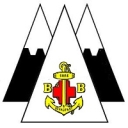Helvellyn - 950 m (3,117 ft)
Helvellyn is the 3rd highest peak in England and one of the most popular with both fell walkers and scramblers, but only from the Patterdale side, where there are deep cut valleys and sharp ridges (called edges) formed by glaciation. The classic Helvellyn Horseshoe route around the cove containing Red Tarn involves an exciting Grade 1 scramble up Striding Edge with a return via Swirral Edge. The Thirlmere side is much less spectacular, as is the summit, which is a broad and uninspiring grassy plateau with some boulder fields.
See its entries on Walkhighlands or Wikipedia or view it from above at Google Earth.
Helvellyn sounds (but is not perfectly spelt) as if it might be a Welsh mountain and this is because it almost certainly originally had a Cumbric name. Cumbric being a local variant of Welsh spoken in Cumbria during the early middle ages. You can read more about Cumbric in the Ill Crag entry. Hel might come from the Cumbric word equivalent to the Welsh word Hâl which means Moorland. Vellyn also might come from a Cumbric word that was equivalent to the Welsh word Felyn (Melyn with the M soft-mutated to an F after a feminine singular noun), which means Yellow. F is pronounced in Welsh as a V is in English.
Another theory is that Helvellyn derives from the Cumbric words whose Welsh equivalents are Helfa, meaning Hunting (or Gathering) Ground and Llyn meaning Lake. Hel is a Welsh verb meaning to Gather, Drive or Hunt and fa (soft-mutated from ma) indicates a place, as discussed in Snowdon / Yr Wyddfa.
So, Helvellyn could be translated as Yellow Moorland, possibly because of the pale yellow colour its grassland would take in winter or dry summers, or perhaps because of yellow flora growing in the grass. Or it could mean Hunting (or Gathering) Ground by the Lake (the lake presumably being Red Tarn).
Published on





